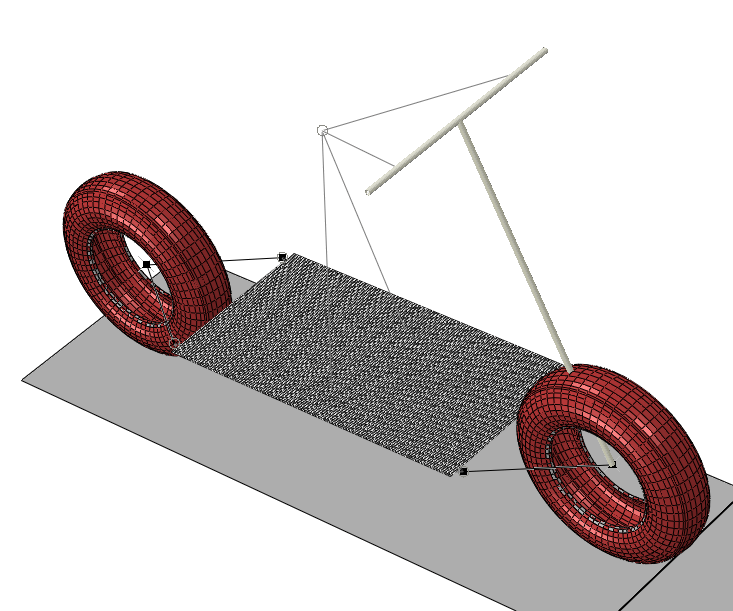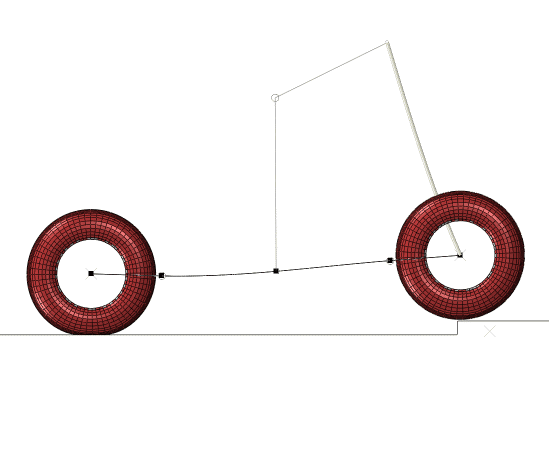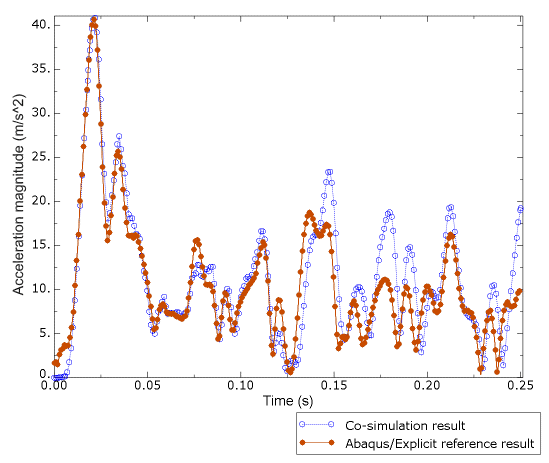Application description
This example considers the impact of a recreational scooter with a bump. An analysis of the transient response of an interaction with a bump is used to determine the accelerations felt by the scooter operator. With this analysis a product designer can make informed design decisions by varying certain design parameters, such as the frame component cross-section properties, tire material, or inflation pressure and observing their influence on the operator acceleration. Effective use of this simulation technique requires that the simulation turnaround time be as quick as possible while retaining essential fidelity in the results.
Geometry
The scooter consists of an operator deck, a frame with handlebars, and two tires, as shown in Figure 1. The overall length of the scooter is 1200 mm, and the overall height is 800 mm. The handlebars are oriented straight.
Materials
The scooter deck and frame tubing are made of mild steel. The tires are a Butyl rubber material.
Initial conditions
The simulation begins with the scooter having inflated tires and traveling toward the bump at a speed of 3 m/s.
Boundary conditions and loading
Weight loading is due to the scooter and the operator.
Interactions
The scooter travels on a rough surface. This surface includes a bump that is 7.5 cm high and is positioned in front of the scooter.








